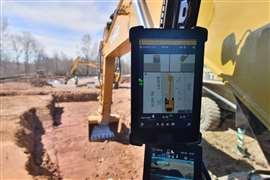Read this article in French German Italian Portuguese Spanish
Law and contract: Sampling and extrapolation
11 March 2024
Sampling and extrapolation allow a claiming party to carry out detailed investigations on a sample of its claims.

Provided that the sample is properly representative, the findings from the investigations can be extrapolated and applied to a larger pool of claims.
This leads, in principle, to a more cost-effective and proportionate way of dealing with complex and voluminous claims, particularly those involving repetitive defects.
Despite this principle, reported instances of successful prosecution of claims are extremely rare.
A typical situation where sampling and extrapolation may be used is:
1 The construction of a large power station requires the fabrication and erection of a large steel structure to house the boiler unit, which is contracted to a specialist contractor;
2 The steel structure requires in excess of 50,000 individual welded or bolted connections;
3 When a level of the steel structure is inspected by the Engineer, it is found that a large number of connections have not been welded or bolted correctly. The types of welding and bolting defect encountered fall into 3 or 4 categories;
4 When the remaining levels are also inspected, it is found that the same type and categories of defect are prevalent throughout the structure and, it is estimated, could extend to many thousand connections;
5 The Employer puts the defects right and raises a claim against the specialist contractor seeking reimbursement of those costs;
6 In bringing its claim, the Employer relies on a selected sample of the welding and bolting defects as being representative of its total claim, and seeks recovery of its total costs associated with the remediation of all the defective connections based on that sample.
Reliable samples
In defending such a case (leaving aside defences on the substantive merits), it is not uncommon for the defendant contractor or subcontractor to say that the claimant must particularise each individual defect and establish breach in each case.
Alternatively, a defendant may instead direct their criticisms at the nature of the sample and allege that it cannot be relied upon as being representative of the full suite of defects.
There are of course positions in between these two extremes.
Whilst each case must be assessed on its own merits, there is nothing in principle wrong with these types of defence.
It may well be the case that the claimant has provided scant detail of the breaches relied on such that further particularisation (even of the sampled defects) is required.
Similarly, the sample presented may be underdeveloped or unexplained (or even overtly biased) such that further evidential steps are required to be taken to make the case whole.
This latter point is the common failing of claimants pursuing these types of case (as per the Amey and ICI cases).
Cases in point
The two leading cases in the UK are Amey LG Ltd v Cumbria County Council and Imperial Chemical Industries Ltd v Merit Merrell Technology Ltd (No.2).
In both cases, the Court rejected the use of sampling on the facts of the matters before them, but accepted that advancing a case on the basis of sampling is permissible in principle.
In so finding, the Court established the following guiding principles on how to properly evidence a case based on sampling and extrapolation:
1 The sample needs to be representative of the dataset – in ICI v Merit, ICI faced criticism because the sample was based on a subset of data which related only to known defects.
2 The parties need to ensure that any experts are provided with all available records on which to extract the sample – in ICI v Merit, ICI was criticised as its expert conducted its analysis on a small pool of data (412 weld reports) that had already been identified as probably being defective.
A larger pool of data (1,800 reports) was available and therefore, ICI was criticised for not providing its expert with the larger pool to undertake the sampling exercise.
3 Advanced planning is required to ensure that the sample can be defended as properly representative – in Amey v Cumbria, the sample was initially obtained to identify whether there were defects in Amey’s work and therefore, the sample was not properly representative of the wider pool of (non-defective) works carried out by Amey.
4 If any issues arise during the sampling exercise which could cast doubt on the sample being truly representative, then the issues should be carefully identified and addressed – in Amey v Cumbria, Cumbria were criticised because patches from the sample which could not be located on a GPS and patches which were classified as ‘pre-surface dressing patches’ were excluded from the analysis.
5 If it is not possible to remove bias completely from the sample, then the presence of bias should be properly recognised and addressed – in Amey v Cumbria, the Court considered that it may have been necessary to remove all of the patches contained in specific work instructions as these were causing bias.
|
About the authors Thomas King is a Partner in Pinsent Masons’ Construction Advisory and Disputes team based in the Johannesburg office. Matthew Watson and Fay Sowden are Associates in the same team based in the London and Manchester offices respectively. This article is derived from content first published in Construction Law. Further information on any legal or contractual issue can be obtained from Pinsent Masons by visiting: www.pinsentmasons.com or calling +44 (0)20 7418 7000 |
STAY CONNECTED



Receive the information you need when you need it through our world-leading magazines, newsletters and daily briefings.
CONNECT WITH THE TEAM









